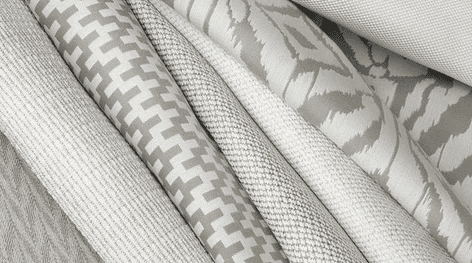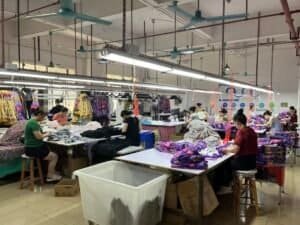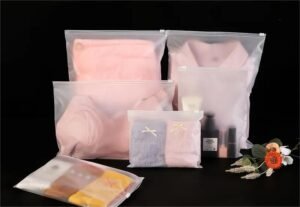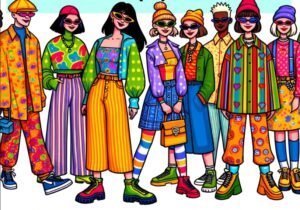As the CEO of Natural Touch Clothing, I’m often asked about sustainable fashion and one topic that always comes up is recycled fabric. What exactly is it, and why is it becoming increasingly important in the fashion industry?
Recycled fabric refers to materials made from pre- or post-consumer waste, which are then processed and transformed into new fabrics. This process significantly reduces waste, saves energy, and conserves natural resources, making it a cornerstone of sustainable fashion.
Understanding recycled fabric is crucial not only for industry insiders like us but also for consumers who are becoming more environmentally conscious. As we shift towards a more sustainable future, it’s essential to explore how recycled fabric can revolutionize the fashion industry.
What Makes Recycled Fabric So Important?
- Waste Reduction: The fashion industry is notorious for generating a substantial amount of waste. Recycled fabric helps mitigate this by reusing materials that would otherwise end up in landfills. By turning pre- and post-consumer waste into new fabrics, we not only minimize the volume of waste but also extend the life cycle of existing materials.
- Conservation of Resources: The production of new, virgin fabrics often requires significant amounts of natural resources, including water, energy, and raw materials. Recycled fabrics, on the other hand, generally require fewer resources to produce. This is especially crucial in the context of diminishing natural resources and the need for sustainable resource management.
- Energy Efficiency: The process of recycling fabrics typically consumes less energy compared to producing new fabrics from scratch. This is because much of the energy-intensive steps of fabric production, like the extraction and processing of raw materials, are bypassed.
- Reduced Greenhouse Gas Emissions: Fabric recycling leads to lower greenhouse gas emissions. Since less energy is used, and since waste is diverted from landfills (where it might decompose and release methane, a potent greenhouse gas), the carbon footprint of fabric production is significantly reduced.
- Promotion of Sustainable Practices: The use of recycled fabrics encourages and often necessitates the development and adoption of more sustainable practices in the fashion industry. It fosters innovation in recycling technologies and promotes a more circular economy, where resources are reused and recycled as much as possible.
- Consumer Awareness and Demand: There is a growing consumer demand for sustainable and eco-friendly products. Recycled fabric meets this demand, allowing consumers to make more environmentally responsible choices. This, in turn, encourages brands and manufacturers to adopt more sustainable practices.
The Process of Creating Recycled Fabric
Recycled fabric is made through a series of steps that transform waste into wearable materials. This process often involves collecting and sorting waste materials, breaking them down, and re-spinning the fibers into new yarn. The specifics vary depending on the type of material being recycled. For instance, the process for recycling polyester is different from that of cotton or wool.
Types of Recycled Fabrics
- Recycled Polyester: Made from plastic bottles, it’s a popular choice for sportswear.
- Recycled Cotton: Derived from post-industrial cotton waste, it’s used in a variety of garments.
- Recycled Wool: Created from wool scraps, it’s often seen in winter wear.
Benefits of Recycled Fabric
The benefits of using recycled fabric are immense. By repurposing waste, we reduce the need for virgin resources, thus conserving energy and minimizing our carbon footprint. Recycled fabrics often require less water and fewer chemicals to produce, making them a more eco-friendly option. Moreover, they offer the same quality and durability as new materials, making them an excellent choice for fashion-forward, environmentally conscious consumers.
Challenges in Recycling Fabrics
While recycled fabrics offer numerous benefits, there are challenges too. The process of recycling fabrics can be complex and expensive, requiring specialized equipment and technology. Additionally, blending recycled and virgin fibers can sometimes impact the overall quality of the fabric. As a company committed to sustainable practices, we continually seek innovative solutions to overcome these challenges.
How Natural Touch Clothing Incorporates Recycled Fabrics
At Natural Touch Clothing, we incorporate recycled fabrics into our product lines, from casual wear to high-end fashion. Our commitment to quality and sustainability means we carefully select materials that meet our high standards while minimizing environmental impact. We work closely with suppliers who share our vision for a greener fashion industry.
The Future of Recycled Fabrics in Fashion
The future of recycled fabrics in the fashion industry is bright. As technology advances, we anticipate more efficient and cost-effective recycling processes. The growing consumer demand for sustainable products will also drive innovation, leading to a wider range of high-quality recycled fabrics. As a leader in the fashion industry, we are excited to be at the forefront of this sustainable revolution.
Conclusion
Recycled fabric is not just a trend; it’s a vital component of the future of fashion. By embracing recycled materials, we’re not only creating beautiful garments but also contributing to a healthier planet. At Natural Touch Clothing, we are proud to be part of this movement, demonstrating that style and sustainability can indeed go hand in hand.





